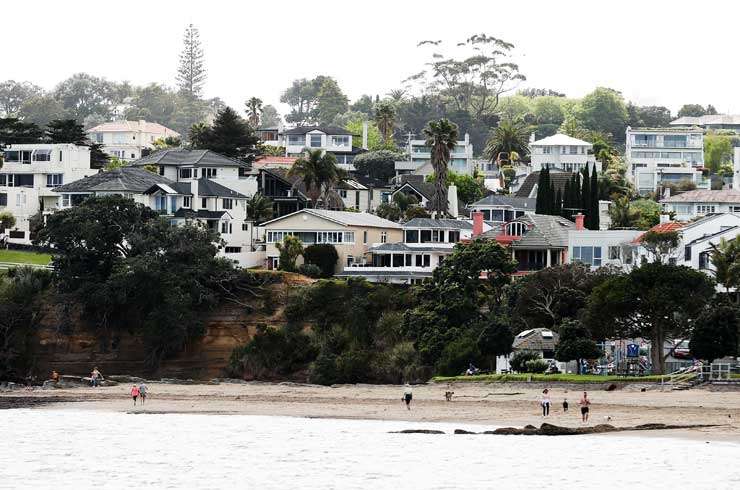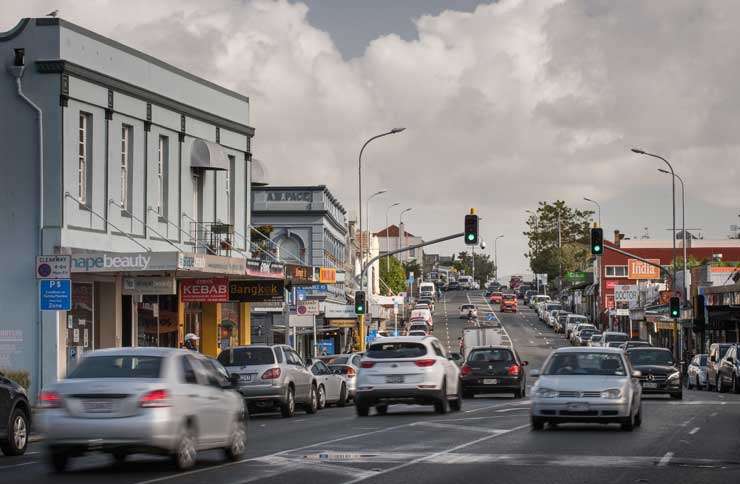As the year’s real estate market finishes its last push of new listings and auctions before the Christmas shut down, analysts at commercial real estate company Colliers International are looking ahead to next year – and five years beyond that - with their annual pick of Auckland’s top ten suburbs where you should put your money.
Pete Evans, Colliers national director of residential projects, said they picked the ten suburbs – not ranked in any order – that will have the best property value growth over the next three to five years.
Most have changes or improvements already underway or planned, plus that X-factor that sets them apart.
The Auckland-focused list was not just about low-priced areas that can grow off a low base.
Start your property search
“Auckland is 100 villages, but only about a dozen of them are any good. We looked at ones that are going to get better – a changing housing mix, better infrastructure, appealing to more than just first home buyers.
“They’re not all up-scale suburbs either.”
He said that the second round of Covid lockdowns had demonstrated the vitality of local town-centres as Auckland’s downtown emptied out of workers and international students, and retail and hospitality drained away.
Colliers’ list includes a mix of suburbs that have been town centres since early twentieth century Auckland (or earlier), Onehunga, Papatoetoe and Kingsland; mid-century working-class Mount Roskill and the first of the modern created town centres, Manukau, Long Bay and Albany.
Less expected was the addition this year of established blue-chip suburbs Epsom, Newmarket and St Heliers.
“Covid has shown us these suburbs are where people are working from home, they’re not leaving the area, they are in walking distance of real local villages.
“You don’t see the for-lease signs, retail and hospitality have loyal local followings. Big sections are being subdivided for twelve terraced homes.
“It’s not about transport links for these so much as lifestyle. St Heliers has the beach but it is for locals, it doesn’t have the crush of tourists and visitors of Mission Bay.

St Heliers offers a beach lifestyle without the crush of tourists. Photo / Fiona Goodall
“Epsom is walking distance to several shopping villages, it’s in double grammar zone, it’s got Cornwall Park and One Tree Hill. There are new apartments at Alexandra Park and Symphony 303, but if more big parcels of land change hands, there will be more."
He said the return of large-scale entertainment gives Kingsland a boost against the now-unaffordable inner-city suburbs like Ponsonby and Parnell.
“City fringe residential suburbs have continued to perform strongly in the last one to two years. With great local amenity, transport options - including the new CRL - these are the suburbs to be in.”
Importantly, Evans said, wealthier buyers in these upscale suburbs are little affected by restrictions on lending or interest rates rises, so property prices will keep on rising. They also have aging occupants of big family homes who are ready to move into something smaller, freeing up properties for the next generation and creating demand for well-designed, maintenance free apartments or townhouses.
Evans singled out Onehunga, on the south of One Tree Hill next to the Manukau Harbour as "perfectly positioned in the centre of Auckland’s isthmus”, 10km from both the city centre and the airport, with both train station and motorway access to SH20.
“It used to be the Queen Street of the south, and it will be again,” he said, pointing to surge of both good developments like The Onehunga Mall Club and Fabric of Onehunga, and smart small-scale industrial developments aimed at small business owners.

Pedestrians walk past an advertisement for a new apartment development in Auckland's Onehunga. Photo / Fiona Goodall
“The Dress Smart and Waiapu Blocks will add approximately 6,000sq m of new bars, cafes, and restaurants that are rejuvenating the retail experience and offering.”
And while he expected Council-owned development organisation Eke Panuku’s future investment in Onehunga Wharf may be 20 years in the making, he said “it will be the Wynyard Quarter for the whole southern corridor.
“It will return Onehunga to the historic prominence of over a century ago.”
New to Evans’ list is the old south Auckland suburb of Papatoetoe, which is already benefiting from the recently completed Puhinui train station recently and growing numbers of train travellers to Middlemore Hospital.
Proposed fast and frequent connections to Auckland Airport, will open up even more work opportunities, Evans said, but already a revitalised mall, refurbished supermarket and residential developments are “converting Old Papatoetoe to New Papatoetoe.”

Property values in Kingsland in central Auckland have been tipped to soar. Photo / Ted Baghurst
Panuku has opened up 2.5 hectares of land, developers adding 80 urban lofts and converting old houses to much needed terraces and apartments.
Next suburb along, the 1970s Manukau is one of three centres outside of the city centre that Auckland Council has prioritised for growth. Improvements extending well beyond the original town centre mall and offices, to include transport upgrades, the trade training centre at Manukau Institute of Technology and the revamped South Auckland’s first destination playground at Hayman Park.
Much-needed new housing - 200 already completed, another 450 started civil works- is medium density to match demand.
“We don’t see high rise in Manukau or Papatoetoe,” Evans said. “Young people still want terraces with a courtyard, it’s much more affordable and cheaper to build than apartments.”
He said buyers in both the inner-west planned suburb of Mount Roskilll – scene of a massive transformation by Kainga Ora that will see 10,000 new homes over the next 10 to 15 years – and North Shore’s Albany should look to the price growth gains reaped by early buyers in the master-planned Hobsonville Point in the north west, as these two suburbs will follow suit.
"Mount Roskill being much more central, and currently largely a construction zone, will provide the same medium to long-term benefits to those who can see the vision and act accordingly.”
Albany, also earmarked by Auckland Council as a town centre like Manukau (the third is Takapuna), already has improved transport links and is close to employment, Massey University and shopping centres.
“It draws people from the north, Warkworth and Whangaparoa, the west, it’s the link. A bit like New Lynn, it will have medium rise, up to eight stories, because that is what the new New Zealanders like,” he said.
Evans final pick is Long Bay. This transplanted Australian has long argued that Aucklanders underestimate the value of the beaches right on their doorstep.
Long Bay, with its planned development, smart new village and house prices that start at $600,000 and go all the way up to multi-millions “has got to be desirable.
“There’s the land supply now, but once that’s gone, there won’t be any more and that will make property there more and more valuable. In five or ten years, there won’t be any more supply.”
That is why, Evans added, rural suburbs like Drury and Takanini on the southern edge of the city are not on Colliers’ growth list.
“The supply is just continuous, it never stops, so there’s no price growth.”
And a peek into next year’s top list?
Eden Terrace, as the enormous CRL construction nears completion in 2024.
“People just see a huge construction site now. But if you wait until it’s finished, you’ve left it too late,” Evans said.




























































